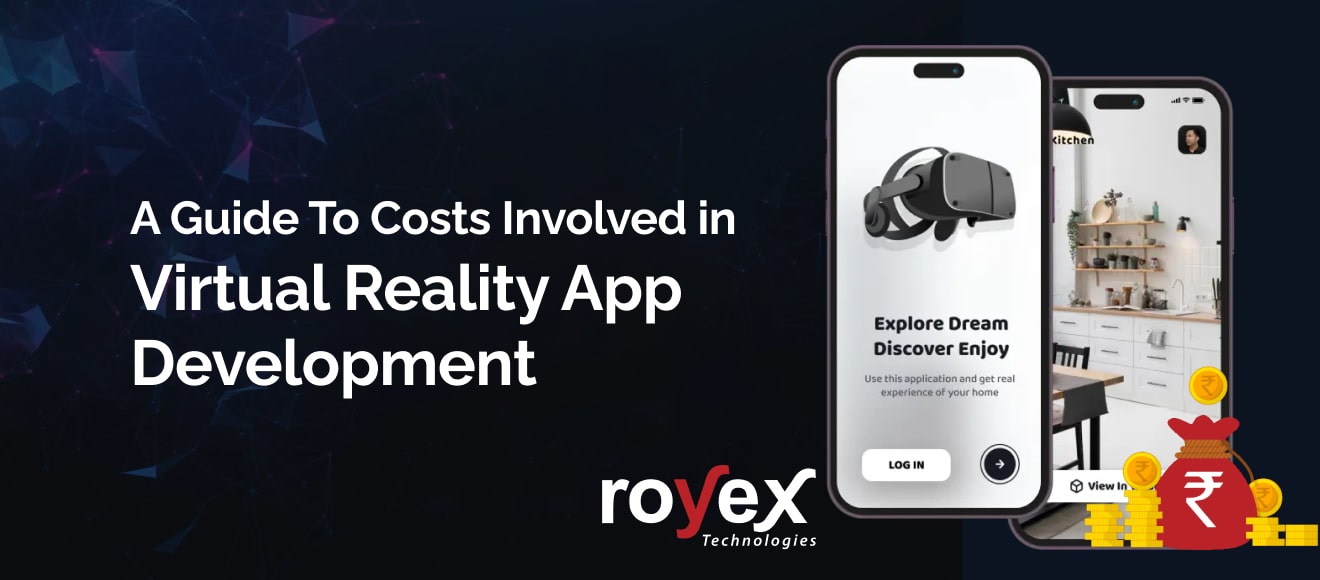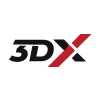
A Guide To Costs Involved in Virtual Reality App Development
The captivating world of virtual reality (VR) offers endless possibilities for immersive experiences, from gaming and entertainment to education and training. The captivating world of virtual reality (VR) offers endless possibilities for immersive experiences, from gaming and entertainment to education and training. However, venturing into this realm often sparks a crucial question: how much does it cost to develop a VR app?
Unfortunately, there's no one-size-fits-all answer. The cost of VR app development is a complex equation influenced by several factors, each playing a vital role in determining the final price tag. This article delves into these factors, providing a comprehensive guide to navigate the VR development cost landscape.
Understanding Virtual Reality App Development

Virtual Reality (VR) app development unlocks a world of possibilities, allowing you to craft software applications that transport users into entirely new realities. These applications, unlike traditional software, go beyond displaying content on a screen. Instead, they leverage VR technology to create a fully immersive experience, where users feel virtually present within a simulated environment.
The scope and complexity of VR applications can vary greatly. At one end of the spectrum, you might find simple 360-degree video experiences that offer a passive exploration of a virtual environment. These could be used for showcasing real estate, taking virtual tours of historical landmarks, or even providing a relaxing escape to a scenic location.
Moving towards the more complex side, VR development ventures into the realm of interactive experiences, where users can actively engage with the virtual world. This could involve:
-
VR Games: Users navigate virtual worlds, interact with objects, solve puzzles, and complete challenges, often using specialized controllers or motion tracking technology.
-
Training Simulations: VR offers a safe and realistic environment for training professionals in various fields, from medical procedures to engineering simulations.
-
Educational Applications: VR can bring abstract concepts to life, allowing users to explore historical events, travel to different parts of the globe, or even interact with complex scientific models.
The development process of a VR application typically follows a well-defined structure, although the specific stages might vary depending on the complexity of the project. Here's a breakdown of the key phases:
-
Conceptualization: This stage involves brainstorming ideas, defining the target audience, and outlining the core functionalities of the VR application.
-
Design: Here, the user interface (UI) and user experience (UX) are meticulously crafted, ensuring intuitive interaction and a comfortable experience within the virtual environment. 3D assets, environments, and any necessary storytelling elements are also created during this stage.
-
Development: This stage involves coding the application logic, integrating any required software development kits (SDKs) specific to VR platforms, and bringing the designed user interface and elements to life through programming.
-
Testing: Rigorous testing ensures the VR application functions as intended, is free of bugs, delivers a smooth user experience, and performs well on the targeted VR hardware platforms.
-
Deployment: Finally, the completed VR application is packaged and distributed through the chosen platform (e.g., Oculus Store, Steam VR) for users to download and experience.
Key Factors Influencing VR App Development Cost
The several factors that influence VR app development cost include:
Complexity of the Application
The complexity of the VR application is one of the primary factors influencing development costs. Simple VR apps, such as 360-degree videos or basic VR tours, are generally less expensive to develop compared to highly interactive applications with complex graphics, animations, and interactions.
Platform Compatibility
Another significant factor is the choice of platform(s) for which the VR app will be developed. VR applications can be developed for various platforms, including Oculus Rift, HTC Vive, PlayStation VR, mobile VR (e.g., Google Cardboard, Samsung Gear VR), and standalone VR devices like Oculus Quest. Each platform has its development requirements and costs associated with it.
Development Team
The expertise and experience of your development team significantly impact the cost. Hiring freelance developers with varying skill sets might be cost-effective initially, but managing them and ensuring quality control can be challenging. Conversely, partnering with established VR development agencies with experienced teams often comes at a premium but offers streamlined development, better quality, and faster turnaround times.
Content Creation
High-quality content is essential for delivering engaging VR experiences. Depending on the nature of the application, content creation can involve 3D modeling, animation, audio production, and video production. The complexity and quality of content significantly impact development costs.
Interactivity and Features
The level of interactivity and features integrated into the VR application also contribute to its development costs. Basic applications with limited interactions may require less development effort compared to feature-rich applications with complex mechanics, multiplayer support, or integration with external systems.
Hardware Requirements
VR applications often require specific hardware components to deliver optimal performance and user experience. These hardware requirements can vary depending on the chosen platform(s) and the complexity of the application. Factoring in hardware compatibility and optimization can influence overall development costs.
Location
The geographical location of your development team impacts the cost. Developers in regions with higher living costs typically command higher hourly rates compared to those in regions with lower costs of living.
Testing and Optimization
Thorough testing and optimization are crucial for ensuring the functionality, stability, and performance of VR applications across different devices and platforms. Testing VR applications involves identifying and resolving issues related to motion sickness, latency, graphical glitches, and compatibility issues, among others. Investing in comprehensive testing and optimization can increase development costs, but is essential for delivering a polished end product.
Cost Breakdown of VR App Development

While the cost of developing a VR application can vary significantly based on the factors mentioned above, here's a general breakdown of potential expenses:
-
Development Team: The development team typically includes designers, developers, 3D artists, animators, audio engineers, and testers. The size and composition of the team depend on the scope and complexity of the project.
-
Software and Tools: VR development requires specialized software tools and licenses for 3D modeling, animation, game engines (e.g., Unity, Unreal Engine), audio editing, and project management, among others.
-
Content Creation: Costs associated with creating 3D models, animations, textures, audio assets, and video content can vary based on complexity and quality requirements.
-
Hardware: Expenses related to VR hardware, such as VR headsets, controllers, motion tracking systems, and development kits, need to be considered.
-
Platform Fees: Some VR platforms may charge developers for publishing and distributing their applications through their storefronts or marketplaces.
-
Maintenance and Updates: Ongoing maintenance, updates, and support services are essential for keeping VR applications up-to-date and addressing issues post-launch.
Strategies for Cost Optimization

While VR app development can be costly, there are several strategies to optimize costs without compromising quality:
-
Start with a Minimum Viable Product (MVP) to test the concept and gather feedback before investing in full-scale development.
-
Prioritize features based on user needs and project goals to focus development efforts and resources efficiently.
-
Leverage existing assets and libraries to reduce content creation costs where possible.
-
Opt for cross-platform development frameworks and tools to reach a broader audience while minimizing platform-specific development costs.
-
Partner with experienced VR development companies or freelancers who have expertise in the specific domain to ensure efficient project execution and cost-effectiveness.
-
Plan for scalability and future updates from the outset to minimize technical debt and additional development costs down the line.
Conclusion
Virtual reality app development offers immense potential for creating compelling and immersive experiences across various domains. However, the cost of developing VR applications can vary based on factors such as complexity, platform compatibility, content creation, interactivity, hardware requirements, and testing. By understanding these factors and employing cost optimization strategies, businesses and developers can navigate the challenges of VR app development effectively while maximizing return on investment and delivering exceptional user experiences in the virtual realm.
Why Choose Royex Technologies for Virtual Reality App Development in Dubai
Established in 2013, Royex Technologies is a leading app development company in Dubai, that provides innovative solutions for small, medium, and large-scale companies. We specialize in responsive web development, mobile app development, CRM integration, AI solutions for website & mobile applications, and many more. Our extensive experience in mobile app development will help you to take your business to a high level.
Check our portfolio to see our previous works. Contact us via email at info@royex.net or call us at +971566027916. To get started with us.




